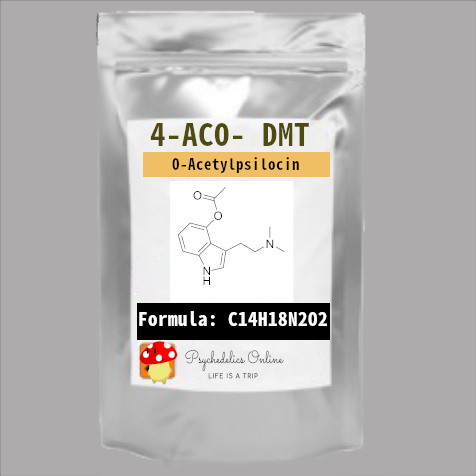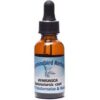Buy 4-ACO DMT Online | 4-aco-dmt sale
$450.00
Buy 4-AcO DMT Online
What is 4-AcO DMT?
4-Acetoxy-N,N-dimethyltryptamine (4-AcO-DMT), also known as O-Acetylpsilocin and psilocin, is a novel psychedelic substance belonging to the tryptamine class. This pound shares a chemical similarity with psilocybin, the active ingredient in psilocybin mushrooms, and acts by stimulating serotonin receptors in the brain.
Background and Development
Originally developed by David Nichols as an alternative to psilocybin for pharmacological studies, 4-AcO DMT functions as a prodrug for psilocin. Its structural similarities to psilocybin and psilocin result in an identical subjective effect, making 4 AcO-DMT an ideal substitute for psilocybin mushrooms. Patented on January 16, 1963, by “Sandoz” Ltd., the compound has gained recognition in the psychedelic community.
Chemical Composition
4 AcO-DMT is a synthetic indole alkaloid featuring two methyl groups and an acetyl functional group. Its molecular formula is C14H18N2O2•HCl, with a molecular weight of 282.8 g. The compound’s effectiveness is believed to arise from its action as a partial agonist on the 5-HT2A receptor, although the specifics of these interactions remain elusive.
Metabolism and Effects
In the body, 4A cO-DMT is thought to convert to psilocin during the first pass through metabolism, particularly in the liver. Most users report that they cannot distinguish between 4 AcO-DMT and psilocin in terms of subjective effects. However, anecdotal evidence suggests that 4-AcO-DMT may last longer than psilocin for some users, while others report a shorter duration and less nausea.
Subjective Experiences
While many users describe the visual distortions produced by 4 AcO-DMT as more akin to those from DMT than psilocin, individual experiences can vary significantly. This may indicate that 4 AcO-DMT possesses unique psychoactive properties beyond its role as a prodrug.
Research and Legal Applications
4-AcO-DMT and other designer drugs available on this site are intended for research and legal applications. The substance exhibits physiological and psychoactive effects, making it a valuable compound for scientific inquiry.
Be the first to review “Buy 4-ACO DMT Online | 4-aco-dmt sale” Cancel reply
Related products
PSYCHEDELICS
PSYCHEDELICS
PSYCHEDELICS
PSYCHEDELICS
PSYCHEDELICS
PSYCHEDELICS
PSYCHEDELICS
PSYCHEDELICS












Reviews
There are no reviews yet.